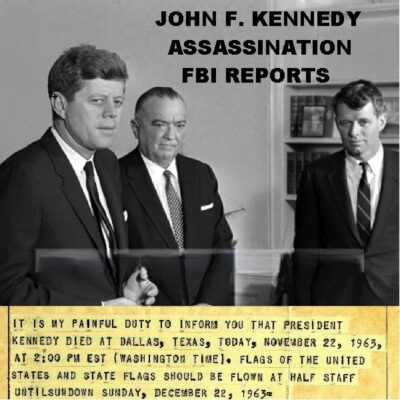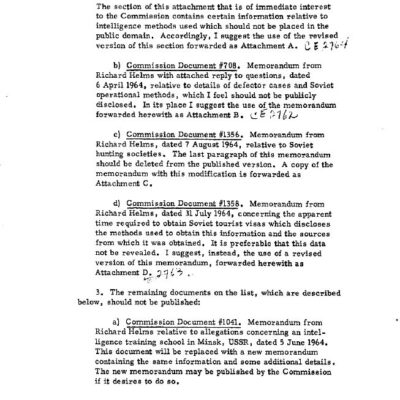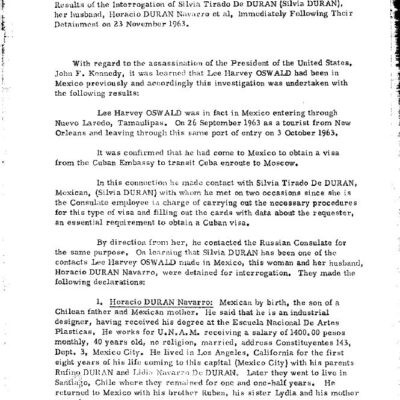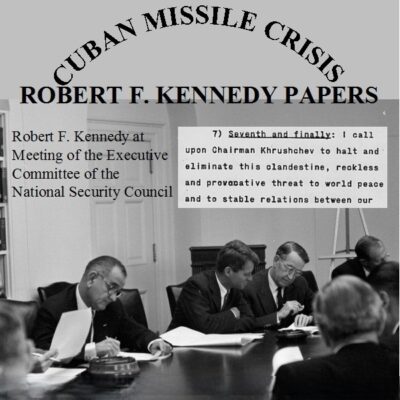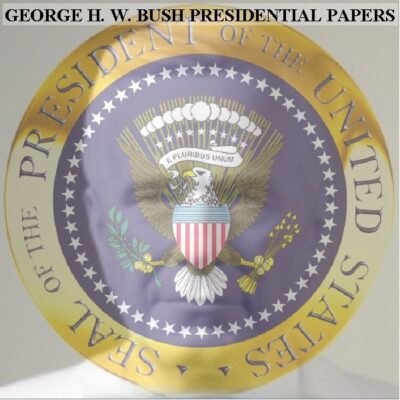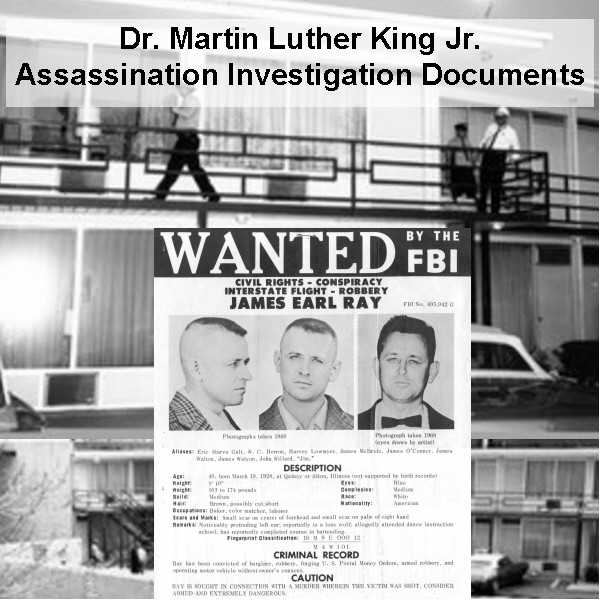
Dr. Martin Luther King Jr. Assassination Investigation Documents
$19.50
Description
Martin Luther King Jr. Assassination: Timeline and Key Figures
Timeline of Main Events
- March 1968: A previous demonstration in Memphis, organized in support of striking sanitation workers, erupts in violence.
- March 28 – April 12, 1968: Operation LANTERN SPIKE takes place. This is a U.S. Army Intelligence surveillance operation exercise in Memphis coinciding with “racial events” and the visit of Martin Luther King Jr.
- April 3, 1968: Dr. Martin Luther King Jr. arrives in Memphis, Tennessee, to march in support of the Memphis sanitation workers’ labor strike. According to associates, he is determined to lead a non-violent protest this time.
- April 3, 1968: Dr. King and several associates check into the Lorraine Motel on Mulberry Street, a motel primarily patronized by African Americans. Dr. King is in room 306 on the second floor, which has a balcony overlooking the motel’s parking lot.
- Before 4:00 p.m., April 4, 1968: James Earl Ray parks his white Mustang on South Main Street.
- Before 4:00 p.m., April 4, 1968: James Earl Ray, using an assumed name, rents a room on the second floor of a rooming house located directly above Jim’s Grill on South Main Street. This room and the communal bathroom have windows overlooking Dr. King’s motel room at the Lorraine.
- Shortly after renting the room, April 4, 1968: James Earl Ray purchases binoculars from a nearby store and returns to the rooming house.
- Just before 6:00 p.m., April 4, 1968: Dr. King is outside on the balcony of the Lorraine Motel in front of his room, 306, conversing with associates in the parking lot below.
- Approximately 6:01 p.m., April 4, 1968: Dr. Martin Luther King Jr. is shot and fatally wounded by a single bullet fired from a 30.06 rifle. The shot comes from the direction of the rear of the buildings on South Main Street, across from the Lorraine Motel.
- After 6:01 p.m., April 4, 1968: The Memphis Police Department dispatch begins recording traffic related to the assassination.
- Two months after April 4, 1968: James Earl Ray is apprehended in London, England, by Scotland Yard.
- Post-apprehension: James Earl Ray is returned to the United States.
- During the eight months after the assassination: James Earl Ray is held in Shelby County Jail before pleading guilty to the murder of Martin Luther King Jr. During this time, he corresponds with his lawyers and family.
- FBI Investigation: The FBI conducts an extensive investigation into the assassination, ultimately concluding that James Earl Ray was a lone, racially motivated assassin. Their investigation includes background checks, interviews with inmates and Ray’s family, and analysis of his potential motives.
- Various Agencies Reports: Multiple agencies, including the Tennessee Attorney General Office, Shelby County Medical Examiner, Royal Canadian Mounted Police, Shelby County Sheriff Department, and the Missouri State Penitentiary, produce reports related to the assassination, including the autopsy report.
- Shelby County Sheriff’s Concerns (Post-Assassination): Shelby County Sheriff Bill Morris is concerned about the possibility of James Earl Ray being killed in custody, similar to Lee Harvey Oswald. He seeks information on the Los Angeles County Sheriff Department’s handling of Sirhan Sirhan, the assassin of Senator Robert Kennedy.
- Late 1970s: James Earl Ray signs a release allowing all his defense material to be made public.
- 2007: James Earl Ray’s Public Defender files, previously thought lost, are discovered in a Shelby County Archives warehouse.
- 2011: The Public Defender office of Shelby County clears James Earl Ray’s files for public release due to the signed release from the late 1970s.
Cast of Characters and Brief Bios
- Dr. Martin Luther King Jr.: A prominent leader of the Civil Rights Movement in the United States. He was in Memphis to support a labor strike by sanitation workers and was assassinated on April 4, 1968.
- James Earl Ray: A white man who, according to the FBI and his guilty plea, assassinated Dr. Martin Luther King Jr. He rented a room across from the Lorraine Motel and fired the fatal shot. He had a history of criminal activity and exhibited racist views.
- Loyd Jowers: A white man who owned and operated Jim’s Grill, a tavern located below the rooming house where James Earl Ray rented a room. His establishment was racially mixed.
- J. Edgar Hoover: The Director of the Federal Bureau of Investigation (FBI) at the time of the assassination. He oversaw the FBI’s investigation and believed James Earl Ray was a lone, racially motivated assassin.
- Ramsey Clark: The Attorney General of the United States at the time of the assassination. He discussed the investigation with J. Edgar Hoover.
- Bill Morris: The Shelby County Sheriff at the time James Earl Ray was in custody. He was concerned about Ray’s safety in custody and sought information from the Los Angeles County Sheriff Department regarding the handling of Sirhan Sirhan.
- Sirhan Sirhan: The assassin of Senator Robert Kennedy. Sheriff Morris was interested in the procedures used by the Los Angeles County Sheriff Department in handling Sirhan’s custody as a point of reference for James Earl Ray.
Dr. Martin Luther King Jr. Assassination Investigation Documents
8,121 pages of FBI reports, Memphis Police Department, Shelby County Sheriff’s Office, Shelby County Prosecutors’, James Earl Ray Public Defender and Scotland Yard files.
On April 3, 1968, Dr. Martin Luther King, Jr. arrived in Memphis, Tennessee, to march in support of a labor strike organized by Memphis sanitation workers. Because a demonstration the month before erupted in violence, Dr. King, according to his associates, returned determined to lead a non-violent protest.
Dr. King and several associates checked into the Lorraine Motel on Mulberry Street, a motel in Memphis patronized primarily by African Americans. Dr. King’s room, 306, was on the second floor, faced Mulberry Street, and had a door that opened onto a balcony directly above the motel’s parking lot.
Across from the motel on Mulberry Street are the backyard areas of buildings that front on South Main Street. South Main and Mulberry Streets run parallel to one another. Fire Station No. 2 faces South Main Street and is on the corner between South Main and Mulberry Streets
At the time of the shooting, a fenced-in parking area was adjacent to the fire station on South Main Street, followed by Canipe’s, a record store, and Jim’s Grill, a tavern. Directly above Jim’s Grill, on the second floor, was a rooming house. The backdoor to Jim’s Grill opened to backyards, which overlooked Mulberry Street and the Lorraine Motel.
The buildings on South Main Street, as well as their backyards, are elevated and higher than Mulberry Street. A retaining wall, approximately eight feet high, extends from the street to the ground level of the backyards on Mulberry Street opposite the Lorraine Motel. At the time of the assassination, overgrown bushes and small trees bordered the backyards and the adjacent parking lot.
Loyd Jowers, who is white, owned and operated Jim’s Grill, a tavern that served a racially-mixed group of customers and specialized in lunch and after-work beer drinking. After 4:00 p.m., Jowers generally worked alone or with one other person.
Sometime before 4:00 p.m. on April 4, 1968, James Earl Ray parked his white Mustang on South Main Street and, under an assumed name, rented a room in the second-floor rooming house directly above the grill. That room and the communal bathroom at the end of the hall both had windows overlooking Dr. King’s motel room at the Lorraine. Shortly after renting the room, Ray purchased binoculars from a nearby store and then returned to the rooming house.
Just before 6:00 p.m., Dr. King was outside on the balcony of the Lorraine Motel in front of his room. At about 6:01 p.m., while conversing with associates in the parking lot below, he was shot and fatally wounded by a single bullet fired from a 30.06 rifle. The shot came from the direction of the rear of the buildings on South Main Street across from the Lorraine.
Documents include:
After Action Report, Civil Disorder Operation LANTERN SPIKE, 28 March – 12 April 1968
The After-Action Report covering the Civil Disorder Operation: LANTERN SPIKE, 28 March – 12 April 1968. Lantern Spike was a U.S. Army Intelligence surveillance operation exercise in which Memphis are “racial events,” coinciding with the visit of Martin Luther King.
FBI Reports
4,317 pages of FBI Reports on the investigation of the assassination of Martin Luther King Jr.
The FBI concluded that James Earl Ray was a lone, racially motivated assassin. With the identification of Ray as the probable assassin, an extensive background investigation began. Missouri State Penitentiary inmates provided evidence indicating his distaste for association with Black inmates. Further evidence of racial incidents was developed in California and Mexico that reflected both a volatile temper and a deep-seated racial prejudice. Finally, in early interviews with the FBI, members of Ray’s family, and particularly his brothers, exhibited strong strains of racism. Although he held open the possibility of conspiracy. FBI Director J. Edgar Hoover’s views had become clear by June 20, when he wrote a memorandum summarizing a discussion with Attorney General Ramsey Clark: “I said I think Ray is a racist and detested Negroes and Martin Luther King and there is indication that prior to the Memphis situation, he had information about King speaking in other towns and then picked out Memphis.”
Various Agencies Reports
2,295 pages of reports including from agencies including Tennessee Attorney General Office, Shelby County Medical Examiner, Royal Canadian Mounted Police, Shelby County Sheriff Department and the Missouri State Penitentiary.
Reports include: Autopsy Report of Martin Luther King, Jr., Daily Jail Activity Reports of James Earl Ray, Forensic Examination of Martin Luther King Medical Evidence Select Committee on Assassination, Leavenworth Kansas And Missouri State Penitentiary Material James Earl Ray Files, Letters from Citizens To Memphis Police Department.
Memphis Police Department Crime Scene Photographs
53 photos of the crime scene, the Lorraine Motel, and key nearby locations.
Scotland Yard Report
Scotland Yard Report on the apprehension of James Earl Ray in London and his return to the United States. James Earl Ray was captured in London two months after the shooting.
Shelby County Sheriff’s Office James Earl Ray Custody Photos
A collection of photos taken at the direction of Shelby Country Sheriff Bill Morris.
The folder with these photos also included photos received from the Los Angeles County Sheriff Department of Sirhan Sirhan in custody. Sheriff Morris wanted to see the practices of the LA Sheriff Department’s handling of the assassin of Senator Robert Kennedy. Sheriff Morris was concern over the possibility of Ray being killed while in custody, as Lee Harvey Oswald was in 1963.
James Earl Ray Public Defender Files
1,126 pages of Shelby County Public Defender James Earl Ray files. These once lost documents were discovered in 2007, at a Shelby County Archives warehouse, where they were misplaced during the process of having them microfilmed. The Public Defender office of Shelby County blocked public release of the material due to lawyer-client privilege. The PD office cleared the documents for release in 2011. James Earl Ray in the late 1970’s signed a release that allowed all his defense material to be made public.
James Earl Ray Correspondences
A collection letters written by James Earl Ray to and from his lawyers and family during the eight months he spent in Shelby County Jail before pleading guilty to the murder of Martin Luther King.
Memphis Police Department Dispatch Recording 6:01pm – 6:55pm April4, 1968
Audio recording of excerpts of MPD dispatch traffic after the assassination









